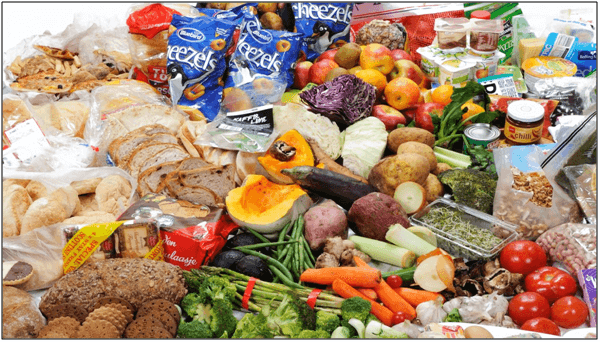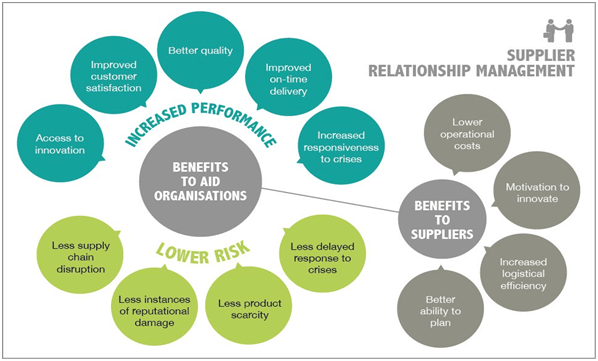Lean procurement practices are often viewed as how to enhance the procurement process and workflows, reducing time and eliminating waste, lower costs while improving the standard of products and services, improve the performance and responsiveness of suppliers, increase the main target on those activities that add value to the firm and enhance procurement’s strategic instead of transactional focus.
Table of Contents
What Causes Food Waste
Food waste could happen at anywhere and anytime. Some foods are even losing before they leave the farms. During production stage garbage might be thanks to insufficient skills, over order, natural calamities, lack of proper infrastructure, transportation and over-production. It also occurs when edible food is intentionally discarded by consumers once they over purchase what they have, improper storage or goes past the expiry date. Retailers will tend to reject foods which don’t meet their requirement like quality, packaging and cosmetic defect.

Waste Classification
There are several types of classifying waste and the following 8 types are the common classification, as follows:
1. Defects
Additional wasted time and energy are required to repair or replace a defective item. This is commonly caused by a lack of standards, weak production systems, as well as poor quality control and process.
2. Inventory
Holding of excess amounts of stock, materials or equipment and it is typically caused by one of the other lean wastes – overproduction
3. Motion
Walking a couple of steps to urge raw materials or stretching to succeed in a tool, by moving the item to a better location would scale back this excess motion.
4. Waiting
Waiting is that the most wasteful activities which are caused by poor communication, downtime, delay, machinery breaking down and processes.
5. Overproduction
Producing more than what is needed, manufacturing it at a faster rate than is required by the customer and storing unnecessary inventory.
6. Over-processing
Over-processing are often caused by poor project management during development and not understanding customer needs.
7. Transport
The movement of individuals, documents, or information and encompasses anything that’s moved between manufacturing, the point of sale materials, tools, and the finished products.
8. Underutilized talent
Not utilizing people to their fullest potential including time, talent, skill, and ideas.
Procurement Process for Waste Elimination
Responsible suppliers whom conduct their business taking into account social and environmental impact. Purchasing standard can cover every step of the supplier’s supply chain that has ingredients traceability, relationships with suppliers, distribution methods, natural resources consumption, packaging and waste management.
The purchase of responsible products usually goes along side by side with responsible suppliers, and attention on the products may be a different strategy. Procurement teams attempt to find products that are by themselves skilled than similar ones. A product’s responsibility is often linked to its ingredients, source, production methods or packaging.

Measurement and data analysis of buying history and usage may be considered to optimize decisions and minimize waste. Procurement teams should analyze purchasing history in terms of volumes and costs. Usage of actual products and waste should be measured to reduce waste and overproduction.

Education is the key to procurement teams who should be aware of the impact of the food they purchase. Procurement teams should be conscious of issues linked to the product they purchase. However, procurement managers cannot choose the skilled option albeit they needed. They are required to consider factors like volumes, price, logistics, and food safety to beat these obstacles and helping procurement teams in their fight against food wastage.
Lean Principles for Procurement Practices
- Defining Value
Value means what’s worth to your customers and what they’re willing to buy. Not the simplest product but the simplest product suitable to the customer.
- Mapping the Value Stream
Understand what’s valuable to your customers and to carve a path to succeed in that value goal. To formalizing steps to manufacture the products by defining and documenting each and each step within the process from raw materials to finished products.
- Continuous Flow
Once eliminated the wastes has been eliminated, ensure that the steps flow smoothly from one to subsequent. All operations should flow smoothly with none interruptions, bottlenecks or delays.
- Pull instead of Push
A push instead of pull is referred as JIT. The goal here is to attenuate the idle inventory in finished products and adding progress stages. By forecasting the demand and keeping only a minimum number of raw materials.
- Pull instead of Push
Perfection may sound impossible but what you’ve got to know is that lean is an organizational culture that needs continuous efforts and nurture. The goal should be supply zero waste and deliver the simplest value to your customers.
Some Lean Techniques for Food Waste Control
- The Kaizen Technique
It is endless improvement strategy that focuses on better ideas involving every aspect of a corporation.
- The 5S System
Sort, Set, Shine, Standardize and Sustain may be a strategy to enhance the general function of a business. It improves house-keeping, organizing and cleanliness at the workplace. Safety in the 6th s which should be the top priority in a workplace.
- Poka-yoke (Mistake Proofing)
Poka-yoke may be a method of avoiding manufacturing defects or automating detection of defects. Manually browsing through products to detect defects is extremely time consuming and laborious. Hence, implementing poka-yoke principles to the manufacturing line saves plenty of time and efforts.
The full content is only visible to SIPMM members
Already a member? Please Login to continue reading.
References
Anne Poirot. (2019). “How Better Procurement Solves Food Waste”. Retrieved from https://futureofwaste.makesense.org/how-better-procurement-solves-food-waste/ on 18/09/2020.
Brian Mcffadden. (2020). “Lean manufacturing in the food industry”. Retrieved from https://www.graphicproducts.com/articles/lean-manufacturing-in-the-food-industry/, accessed on 11/09/2020.
Laura Depta. (2018). “Global Food Waste and its Environmental impact”. Retrieved from https://en.reset.org/knowledge/global-food-waste-and-its-environmental-impact-09122018, accessed on 11/09/2020.
Mohammad Naeem, ADLSM (2019). “Lean Six Sigma Best Practices for Effective Supply Chain”. Retrieved from SIPMM: https://publication.sipmm.edu.sg/lean-six-sigma-best-practices-effective-supply-chain/, accessed on 11/09/2020.
Prasad Ramesh. (2020). “Lean manufacturing:The ultimate guide”. Retrieved from https://erpnext.com/blog/manufacturing/lean-manufacturing on 16/09/2020.
Rever Team. (2019). “Addressing 7 Wastes Hurting Your Business Efficiency – As Defined by Lean” Retrieved from https://reverscore.com/7-wastes-of-lean/, accessed on 14/09/20
Serene Ke Quanling, DPSM (2020). “Key Considerations for Green Procurement Practices”Retrieved from SIPMM: https://publication.sipmm.edu.sg/key-considerations-green-procurement-practices/,accessed on 11/09/20.

